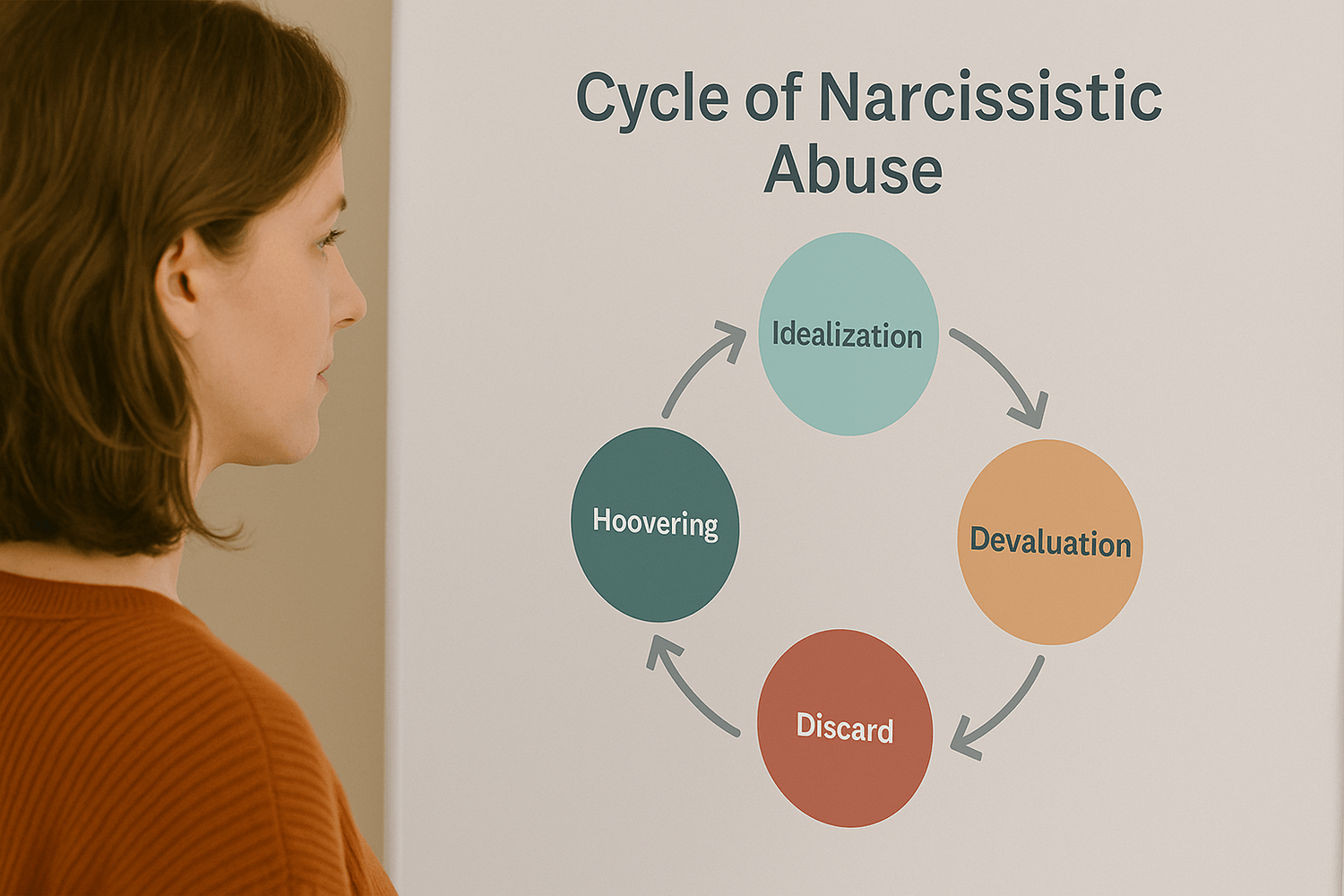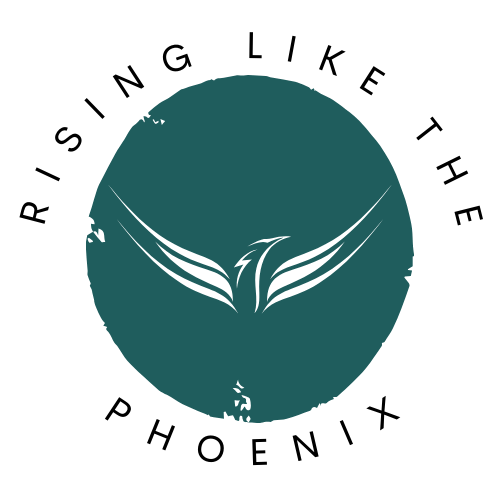Take Back Control After Narcissistic Abuse: Learn, Grow, and Reclaim Your Power

Healing from narcissistic abuse isn’t just about surviving; it’s about learning, growing, and reclaiming the life that was stolen from you. When you’ve spent years (or even decades) entangled in a toxic relationship, the idea of taking back control can feel like an impossible dream. But here’s the truth you need to hear: Knowledge is power, and the more you understand about what happened to you, the stronger and more unshakable you become.
Whether you’re freshly discarded, deep in the grief, or slowly climbing your way out of the rubble, this guide is here to support you. Together, we’ll explore the stages of taking your power back after narcissistic abuse, and how learning and growing through the pain can lead you to the strongest, most authentic version of yourself.
The Illusion of Control in a Narcissistic Relationship
Let’s start with what makes narcissistic abuse so insidious: control. You may not have noticed it at first. It might’ve looked like protection, like deep love, like devotion. But gradually, that “care” began to isolate you, break you down, and convince you that you couldn’t survive without them.
Gaslighting. Silent treatments. Love bombing, followed by brutal devaluation. The narcissist’s greatest weapon isn’t anger; it’s confusion. If they can control your perception, they don’t have to control your reality. That’s why healing begins not with revenge, but with knowledge. When you learn to name what you’ve been through, you begin to break free from it.
Why Knowledge Truly Is Power
After abuse, many survivors ask: Why didn’t I see it sooner? That’s the wrong question. The better question is: What was I never taught to see? Most of us were conditioned to tolerate mistreatment from an early age, especially if we were raised by emotionally immature or narcissistic parents. We were taught to please, to appease, to silence ourselves for the sake of peace.

Step One: Learn What Healthy Actually Looks Like
Once you’ve escaped the toxic cycle, the first challenge is re-orienting your inner compass. Narcissistic relationships warp your understanding of love, safety, and connection. You may have been led to believe that love must be earned, that silence is normal, or that walking on eggshells is just part of “keeping the peace.”
It’s time to learn what real, healthy love looks like, starting with the love you give to yourself.
Healthy relationships are not perfect. But they are safe, consistent, and nourishing. They don’t leave you guessing. They don’t drain you. They don’t cause emotional whiplash.
Here are some truths to anchor yourself to:
Love doesn’t demand that you shrink. In a healthy relationship, you are allowed, even encouraged, to be your full, vibrant self. You’re not punished for having opinions, emotions, or dreams of your own.
Healthy love respects boundaries. No means no. Time alone is honored. Your body, your time, and your energy are seen as yours, not as something owed to another person.
Disagreements are handled with care. Conflict exists in every relationship, but in a healthy one, it doesn’t escalate to cruelty, manipulation, or punishment. You feel safe to speak your mind, even when you don’t agree.
Consistency replaces chaos. There is no cycle of extreme highs and lows. You’re not constantly questioning where you stand. Healthy love is stable, not based on emotional roulette. The Jekyll-Hyde roller coaster is chaos.
Affection is not transactional. You’re not shown love only when you perform a certain way. You're not punished with the silent treatment or rewarded only when you're compliant. Real love is steady and unconditional.
For more information on the stages of Narcissistic Abuse see: https://www.verywellmind.com/narcissistic-abuse-cycle-stages-impact-and-coping-6363187
Ask yourself:
What does safety feel like in a relationship?
How do I define respect, communication, and honesty?
Where have I overridden my own needs in the past?
What were the healthy relationships (if any) I’ve witnessed in others? What stood out about them?
What would it feel like to be emotionally at ease in a partnership?

If your first instinct is “I don’t know”, that’s okay. So many of us were never given models of healthy love. But you can learn it now. You can unlearn the dysfunctional patterns you’ve been taught and replace them with a deeper, more nourishing kind of connection.
Start by giving yourself the love you never received. Speak kindly to yourself.
Protect your time and energy. Learn how to sit with your feelings instead of judging them. This is what re-parenting looks like. This is how you reclaim what was stolen.
Healing begins when we stop looking for someone else to save us, and instead, become the safe place we've always needed.
Step Two: Grow Through the Grief
There’s no sugarcoating it, grief is brutal after narcissistic abuse. You’re not just mourning a relationship; you’re mourning the person you were before it. You may grieve lost time, lost opportunities, even lost identity. I grieved my home, my community, my family unit, and my identity after three decades.
This part of healing can feel like walking through fire. But here’s the thing: you will emerge on the other side. And you won’t be the same woman who went in.
Growth looks like:
Saying no without guilt.
Setting boundaries that protect your peace.
Identifying your needs without apology.
Acknowledging red flags early and trusting your gut when you see them.
Growth is messy, nonlinear, and often exhausting. But it’s worth every step. Because every single one is you reclaiming yourself.
Step Three: Take Back Control, One Brave Choice at a Time
You don’t have to do it all at once. Healing isn’t about suddenly becoming fearless or perfect. It’s about small, intentional acts of self-respect that compound over time.
Taking back control after narcissistic abuse can be as simple as:
Opening a new bank account in your name.
Signing up for a course that sparks your curiosity.
Starting a journal to track your feelings, goals, and breakthroughs.
Decluttering your space to release old energy.
Creating a safety plan if your situation is still volatile.
Every act of self-advocacy sends a powerful message:
I matter.
My needs matter.
My future matters.

You Are Not Alone in This
If you’re reading this and feeling overwhelmed, take a deep breath. You are not behind. You are not broken. You are not alone. You are just beginning on the road to healing.
You are on a path that many strong, beautiful souls have walked before you, and many more will follow. The more you learn, the more you grow, and the more you take back your control, the more you light the way for others still trapped in the dark. Reach out to people you trust - the helpers, those who want to see you happy and healthy, your inner circle of confidantes, your spiritual community.
And that, my friend, is your power.
Frequently Asked Questions:
Q: How long does it take to heal after narcissistic abuse?
There is no one-size-fits-all answer. Healing is nonlinear and personal. Some people begin feeling stronger after a few months, while others need years to fully reclaim their lives. The key is consistent self-care, education, and support.
Q: Can narcissists change?
Narcissistic personality disorder is deeply ingrained, and most narcissists lack the self-awareness or desire to change. True recovery focuses on you, not on changing or fixing them. It has most likely been “about them” all along. Now it’s all about YOU! You matter!
Q: How do I know if what I experienced was narcissistic abuse?
If you felt constantly confused, diminished, anxious, or afraid in your relationship, and those feelings intensified over time, it may have been narcissistic abuse. Trust your intuition and seek validation from trauma-informed sources. If you find that you’ve been lied to, betrayed, or disrespected- those are all abusive tactics. For more information, see: https://www.talkspace.com/mental-health/conditions/articles/narcissistic-abuse-recover-heal
Q: What if I still miss them?
Missing someone doesn’t mean you made a mistake by leaving. Trauma bonds are real and powerful. Honor the feeling, but remember why you left. Healing is often accompanied by emotional whiplash; it’s normal. I thought I missed him for months after my discard, but then the fog started to lift. As I slowly started to process all those years of silent abuse, I finally realized I was missing someone who never truly existed- I missed who I thought he was. It was all a mask.
Q: Where can I go to keep learning and growing?
My book, A Girlfriends' Guide to the Other Side, was created for you. It’s a step-by-step roadmap for healing after narcissistic abuse, built on compassion, education, and empowerment. You’ll also find free checklists, journaling prompts, and resources on my website to guide your journey.
Download Your Free Guide to Healing from Narcissistic Abuse
Categories
Rise Weekly Newsletter
Because healing isn’t just about surviving, it’s about rising. Rise Weekly delivers empowering insights, gentle reminders, and soulful tools to help you reclaim your strength, set powerful boundaries, and rebuild a life that feels like you. If you're ready to rise above trauma and step into your next chapter with clarity and courage - this is your space.
Created by © Suzanne Startari with systeme.io




